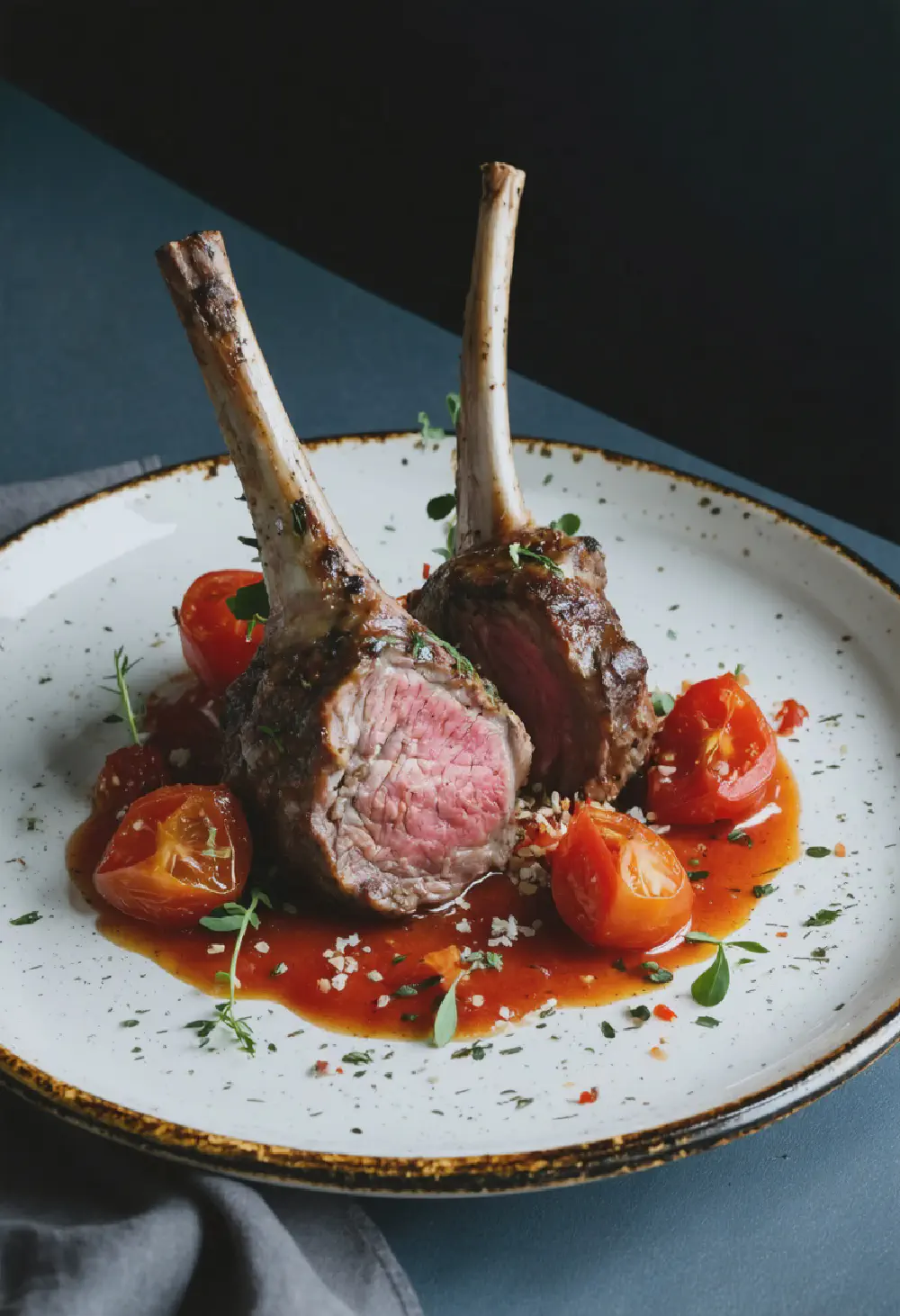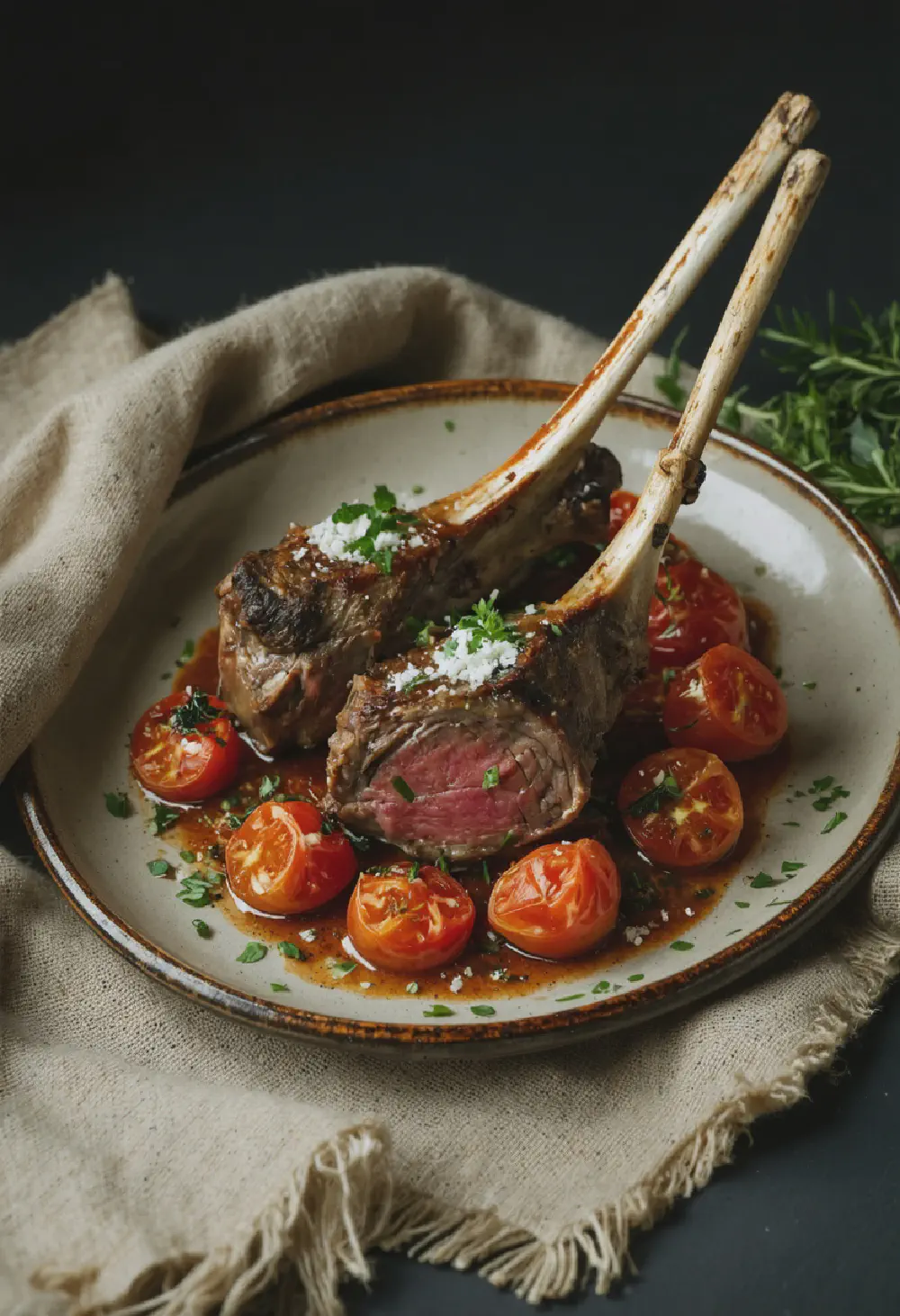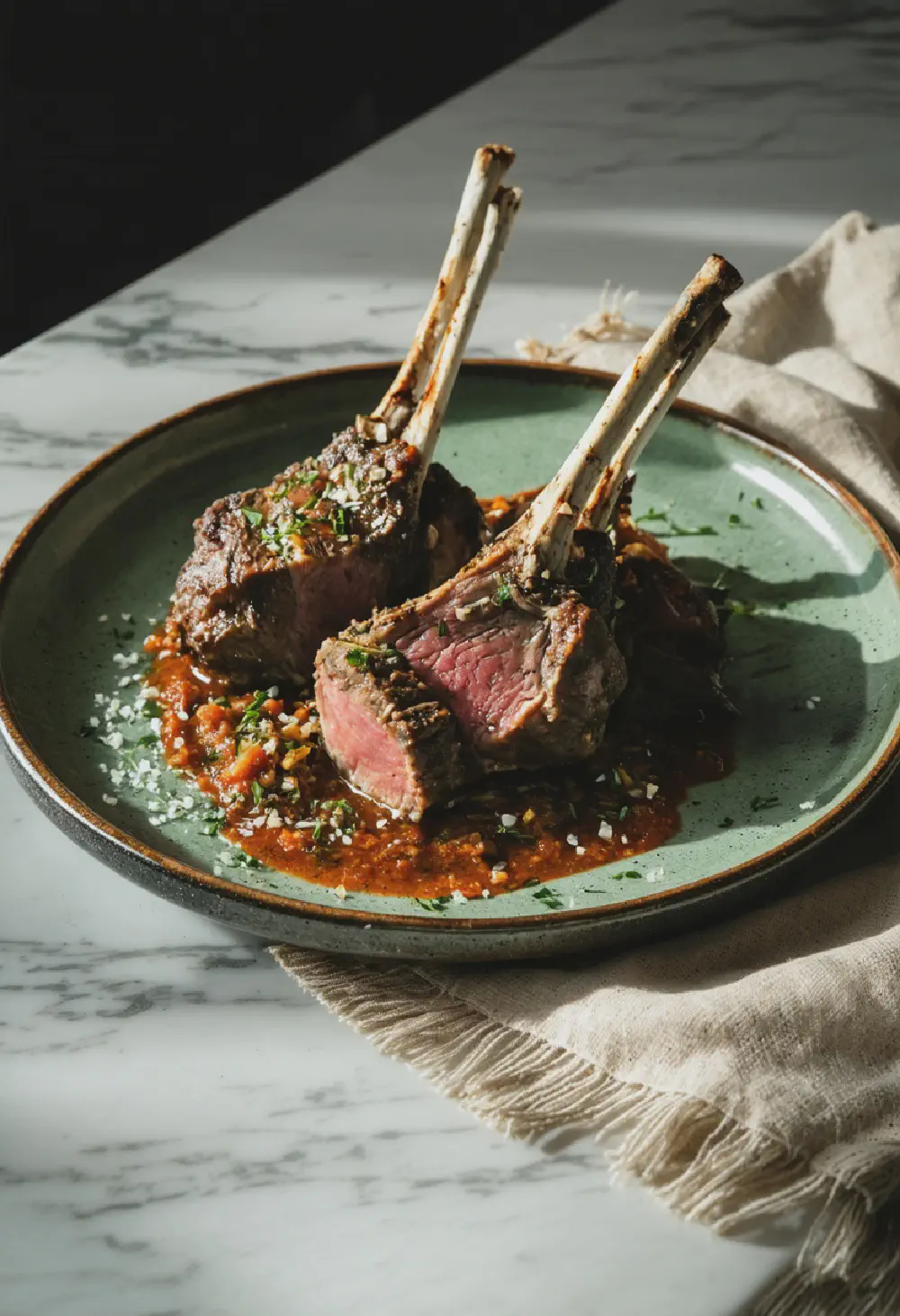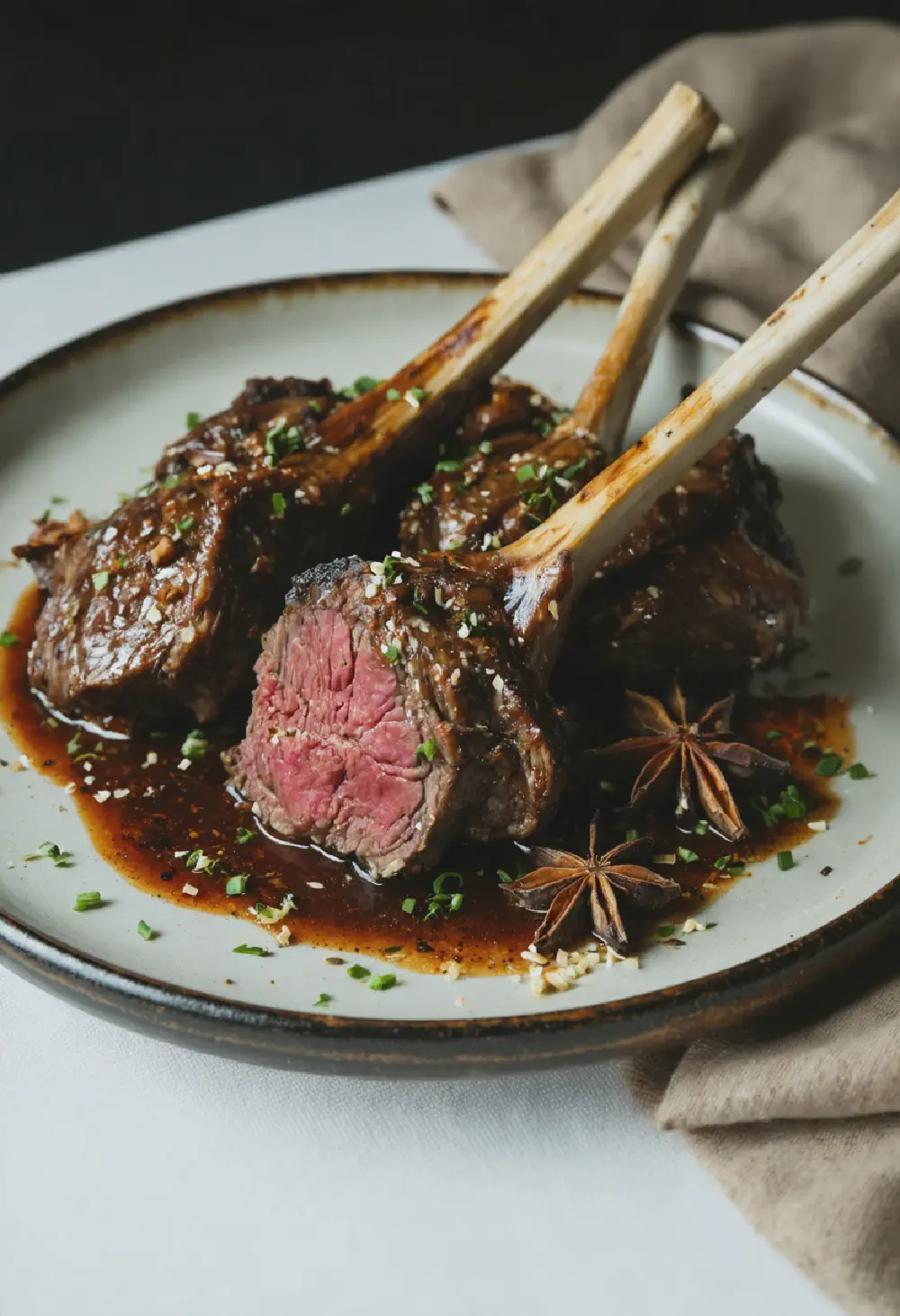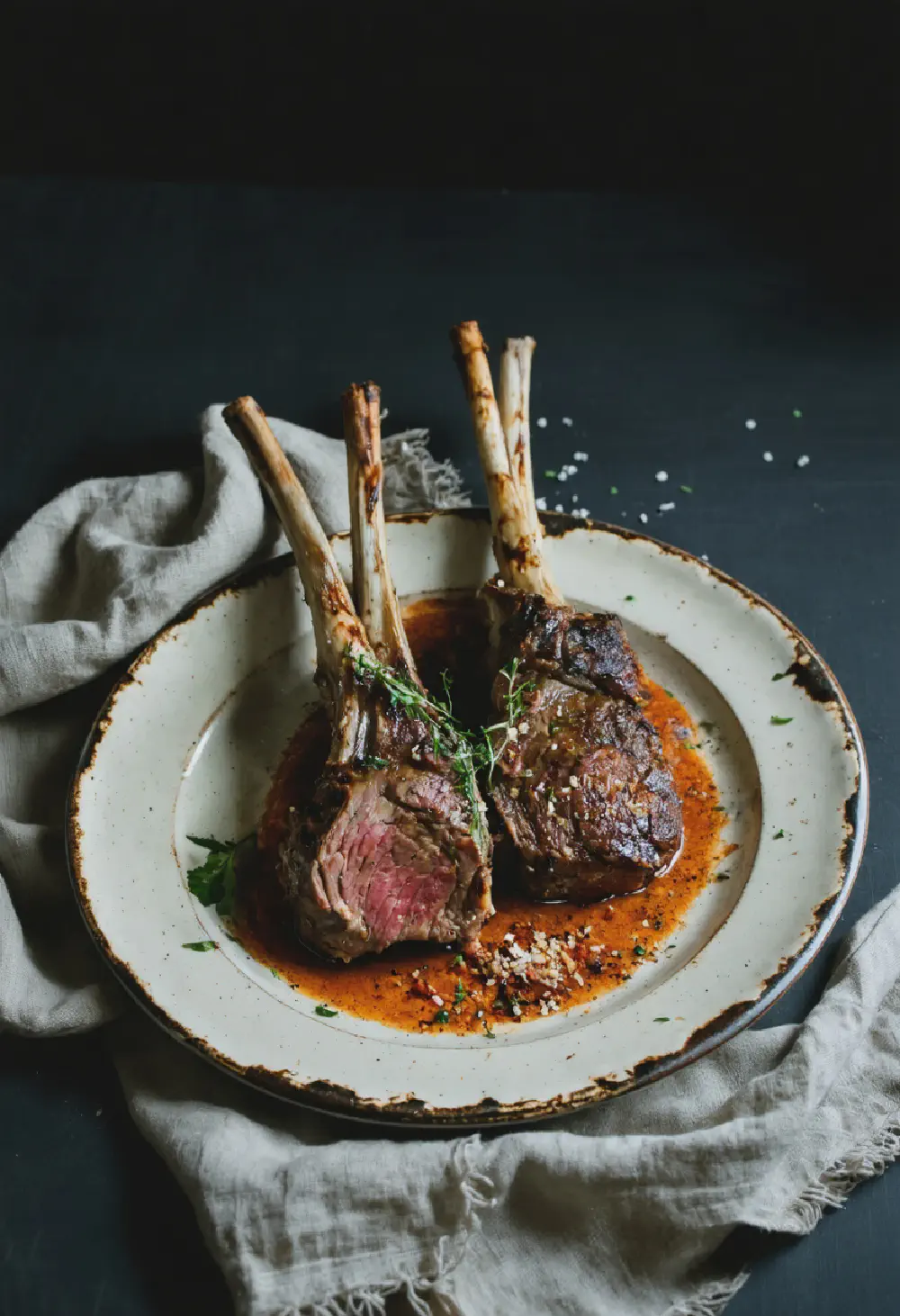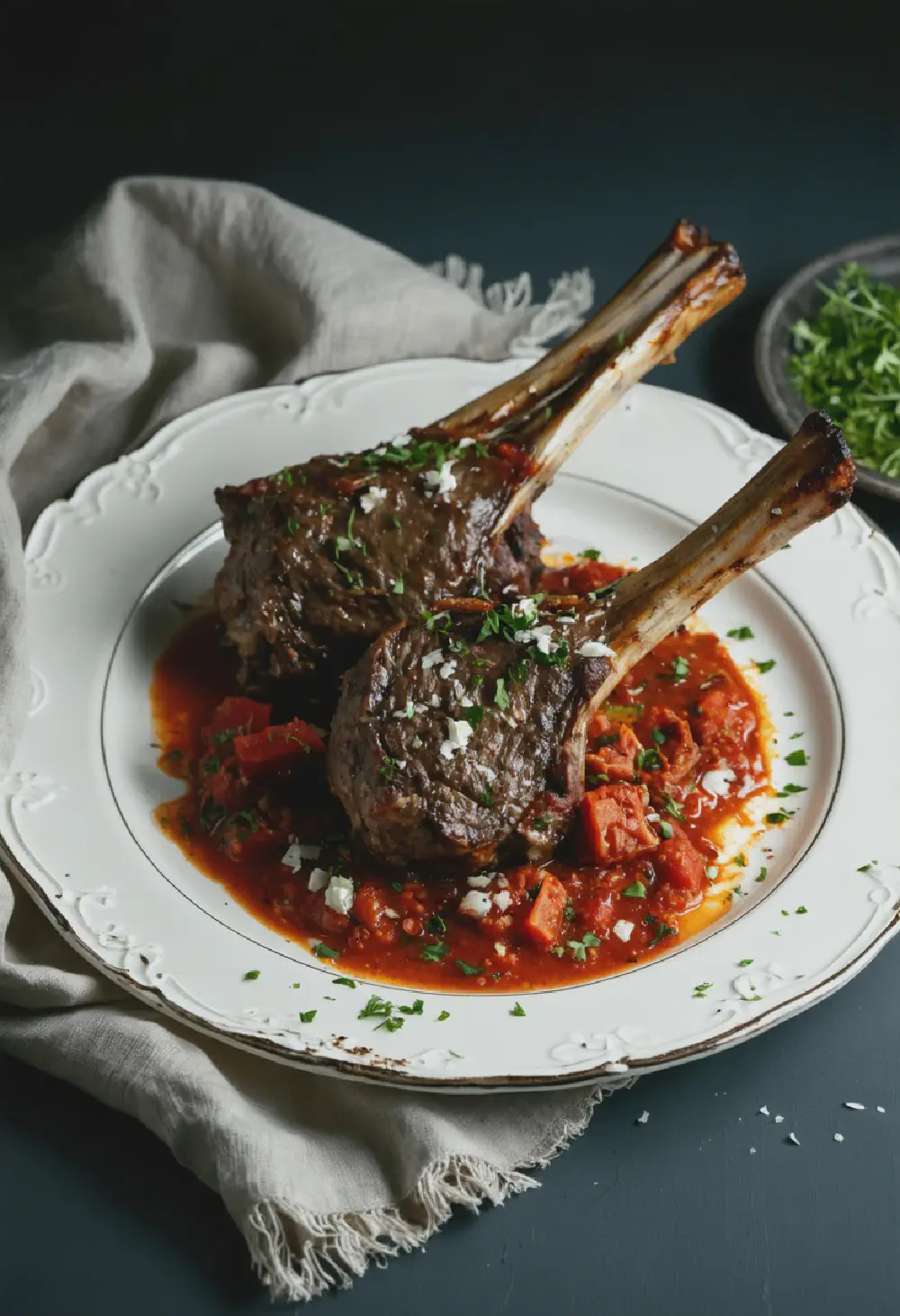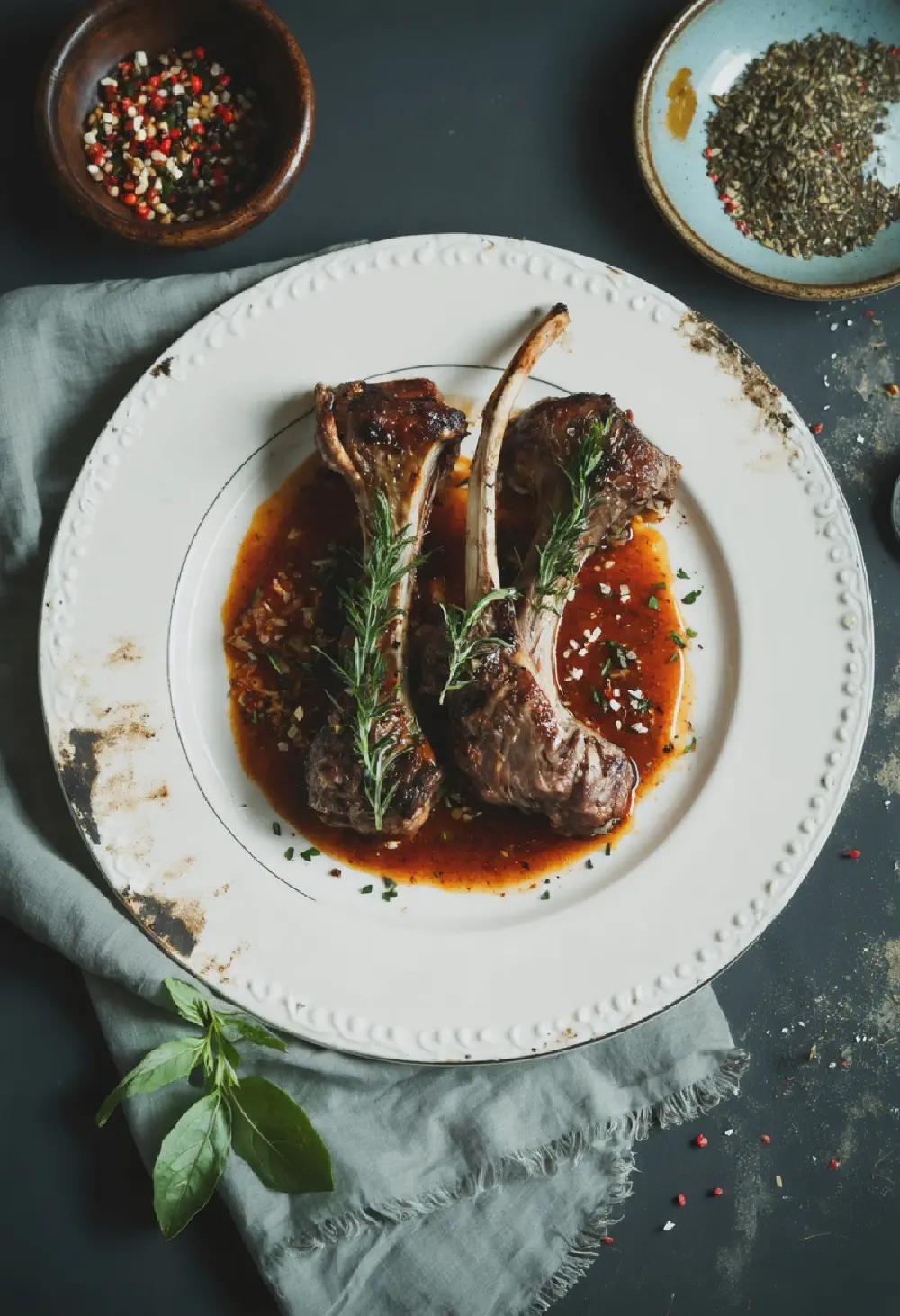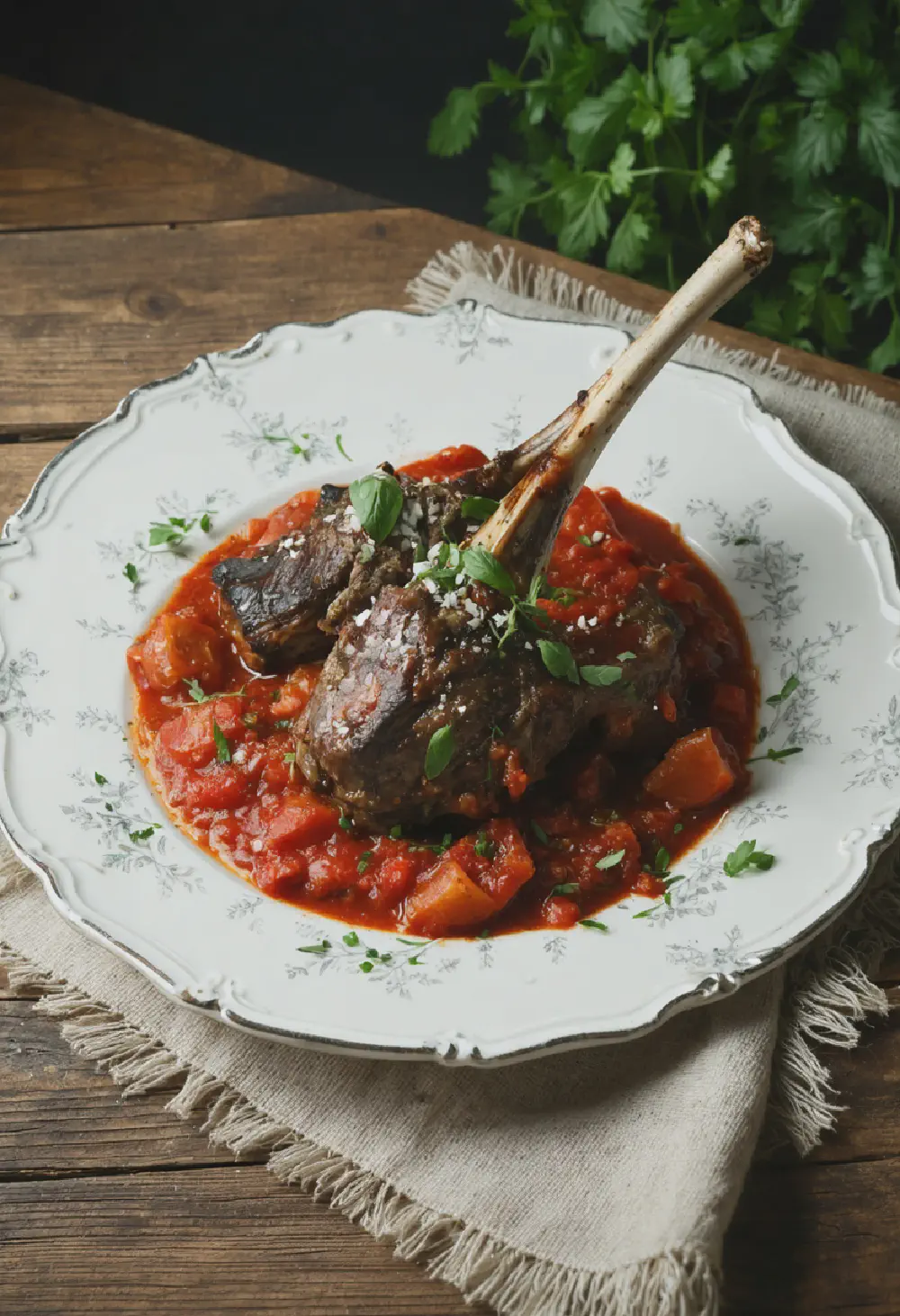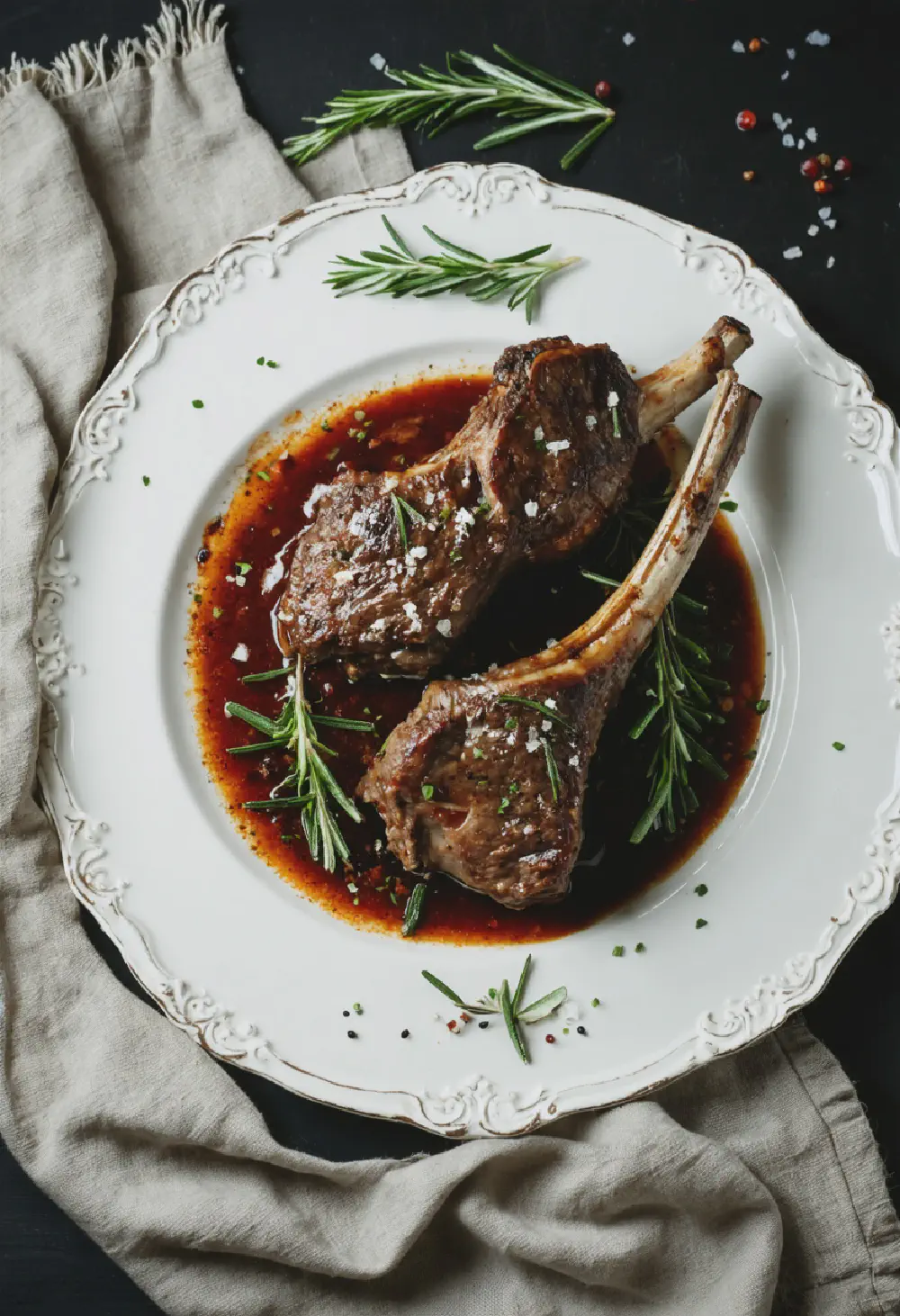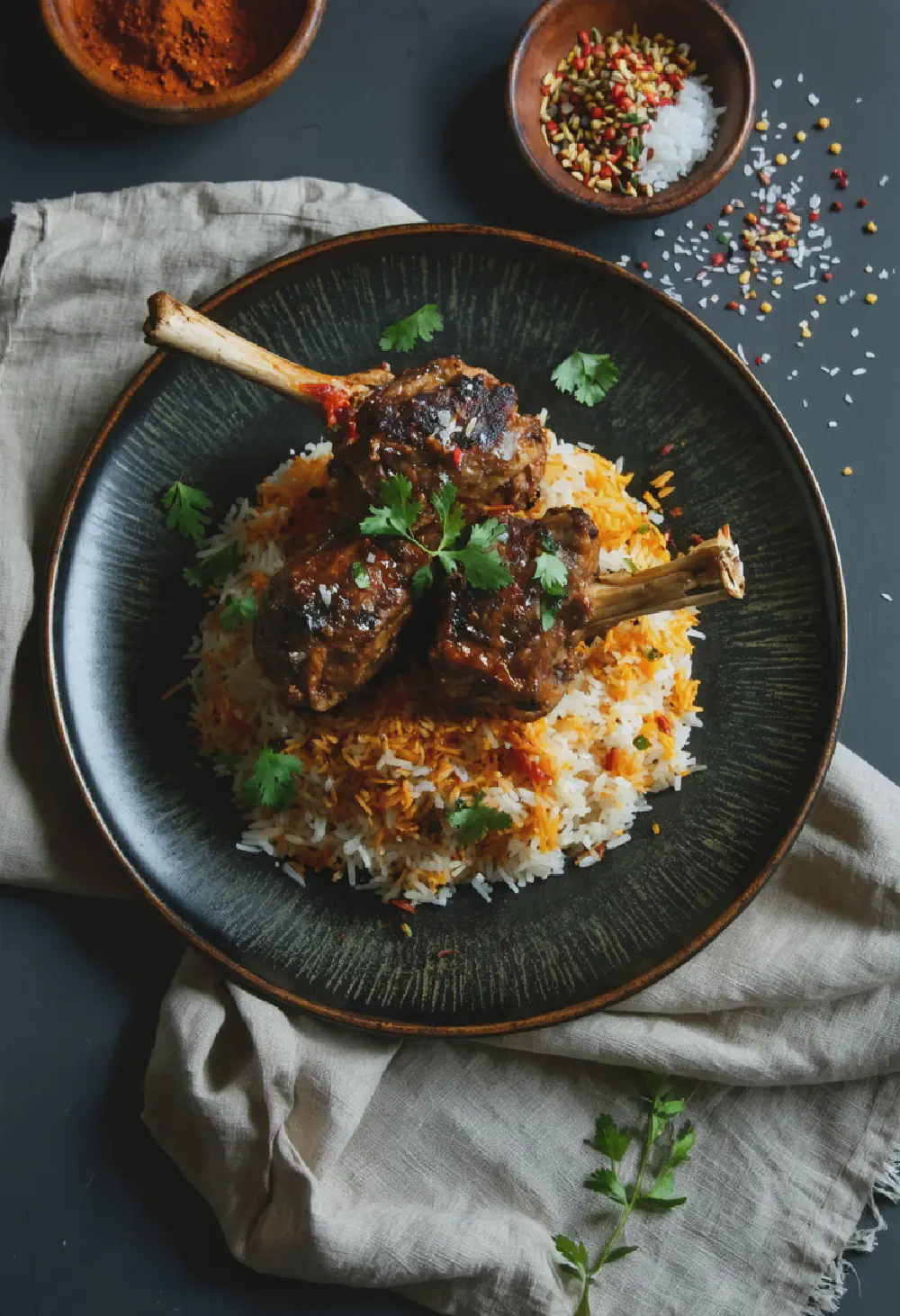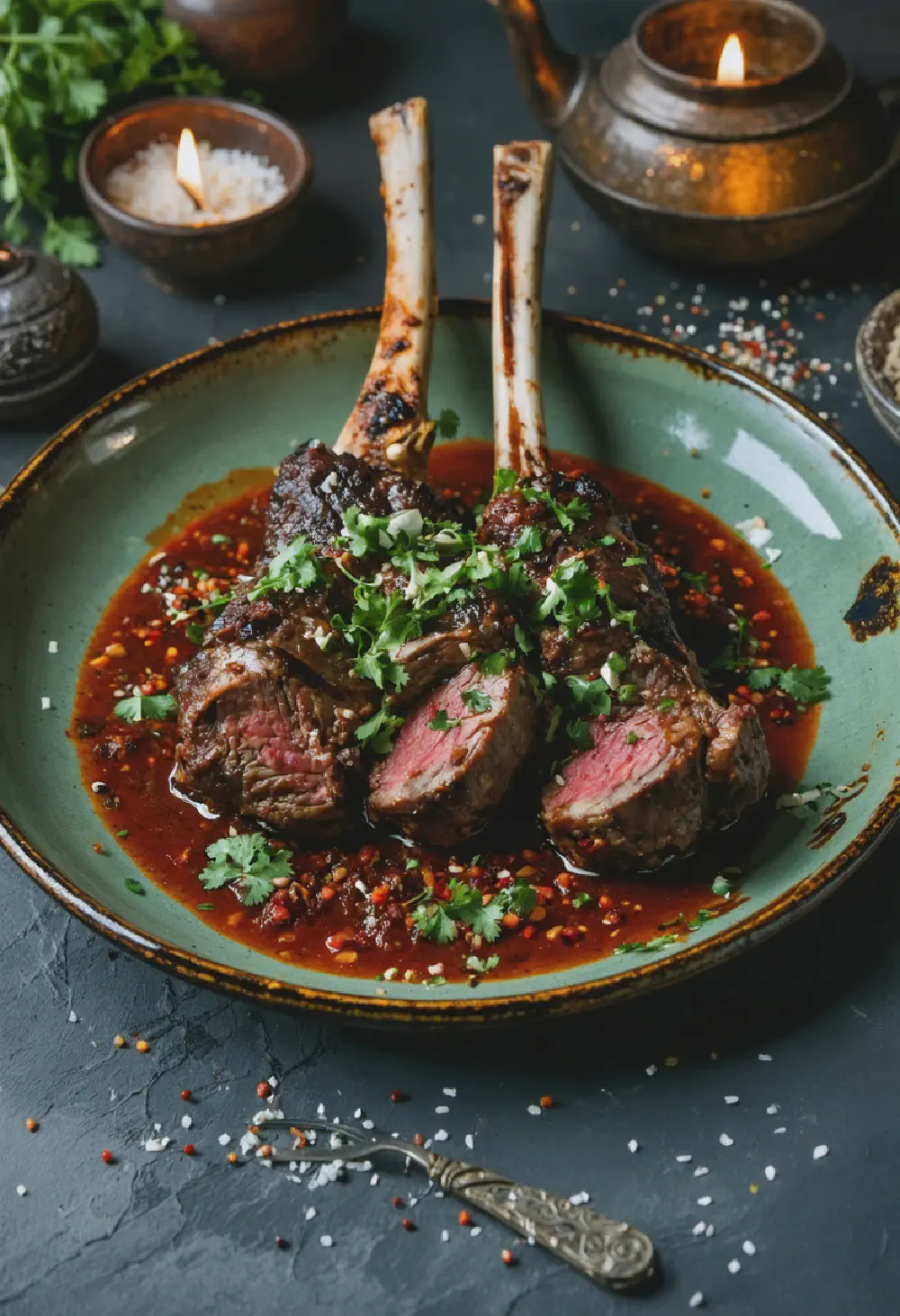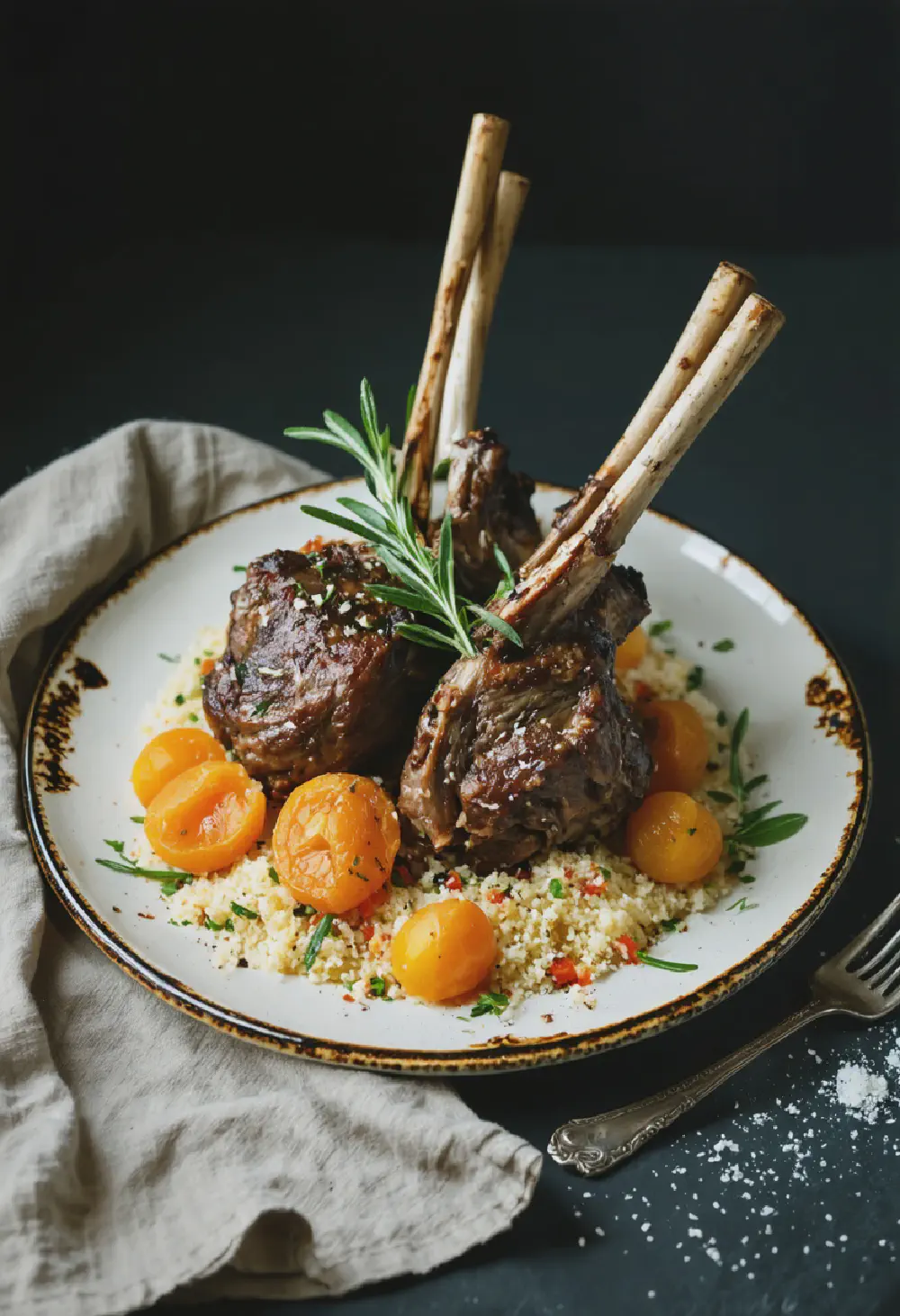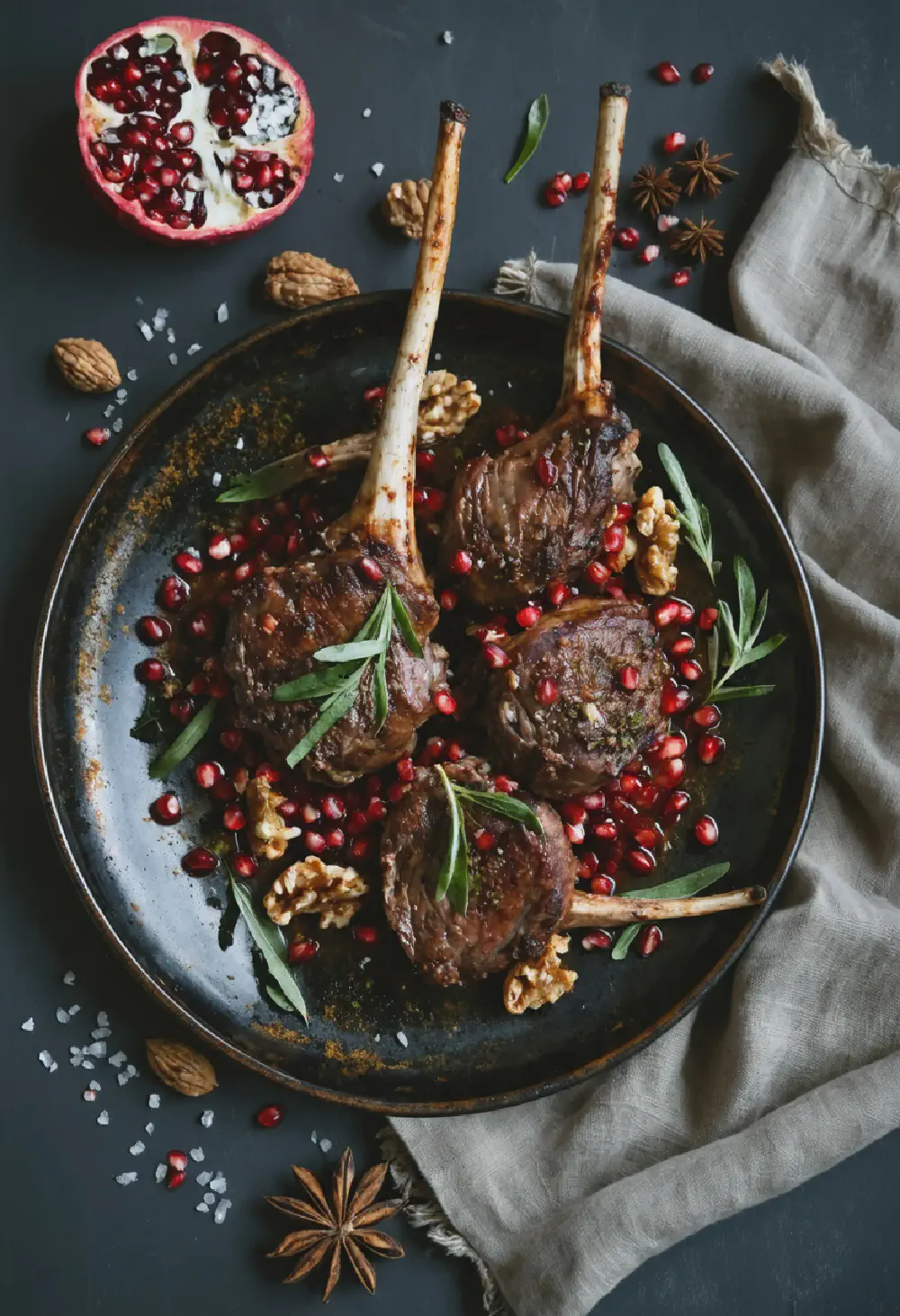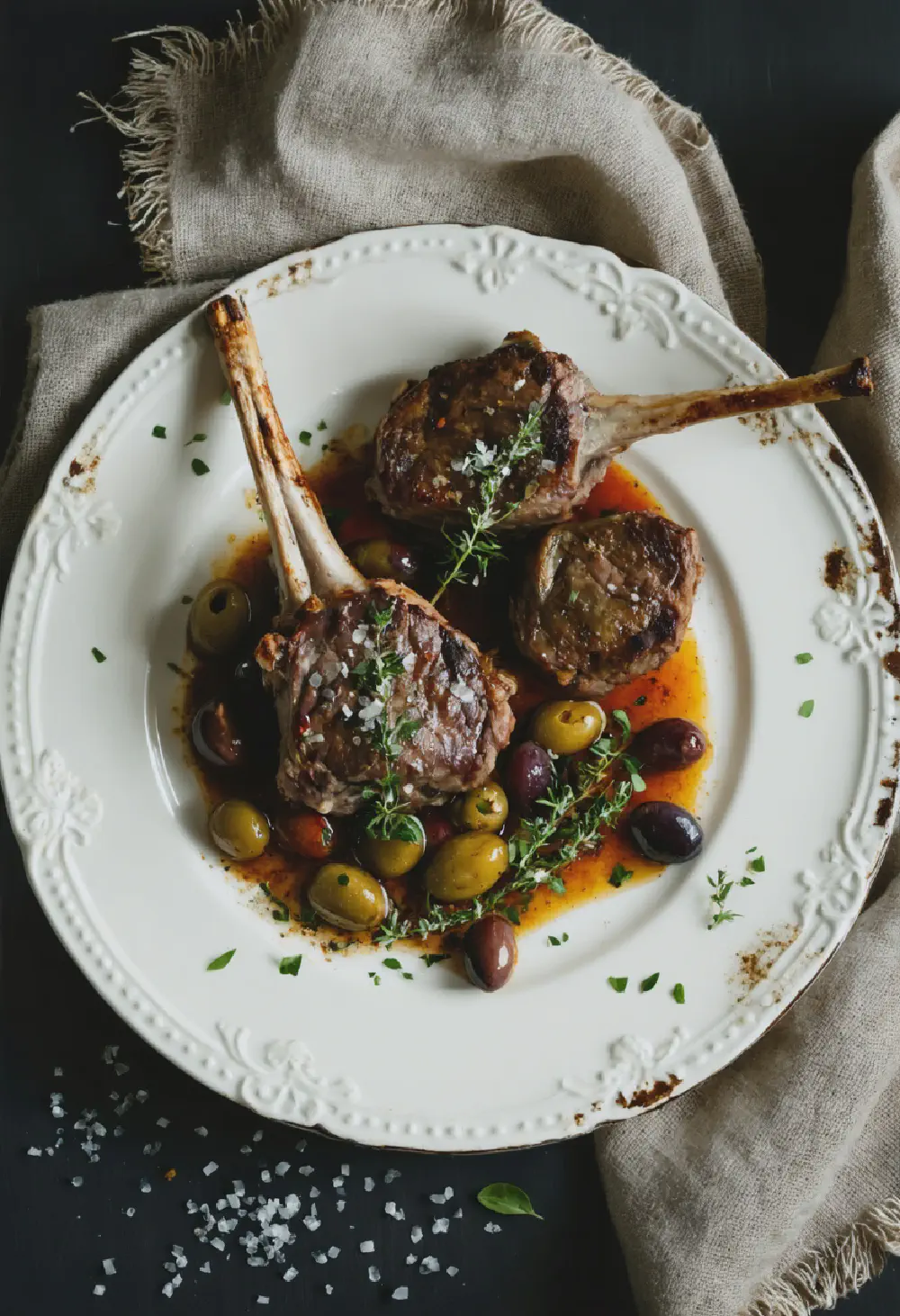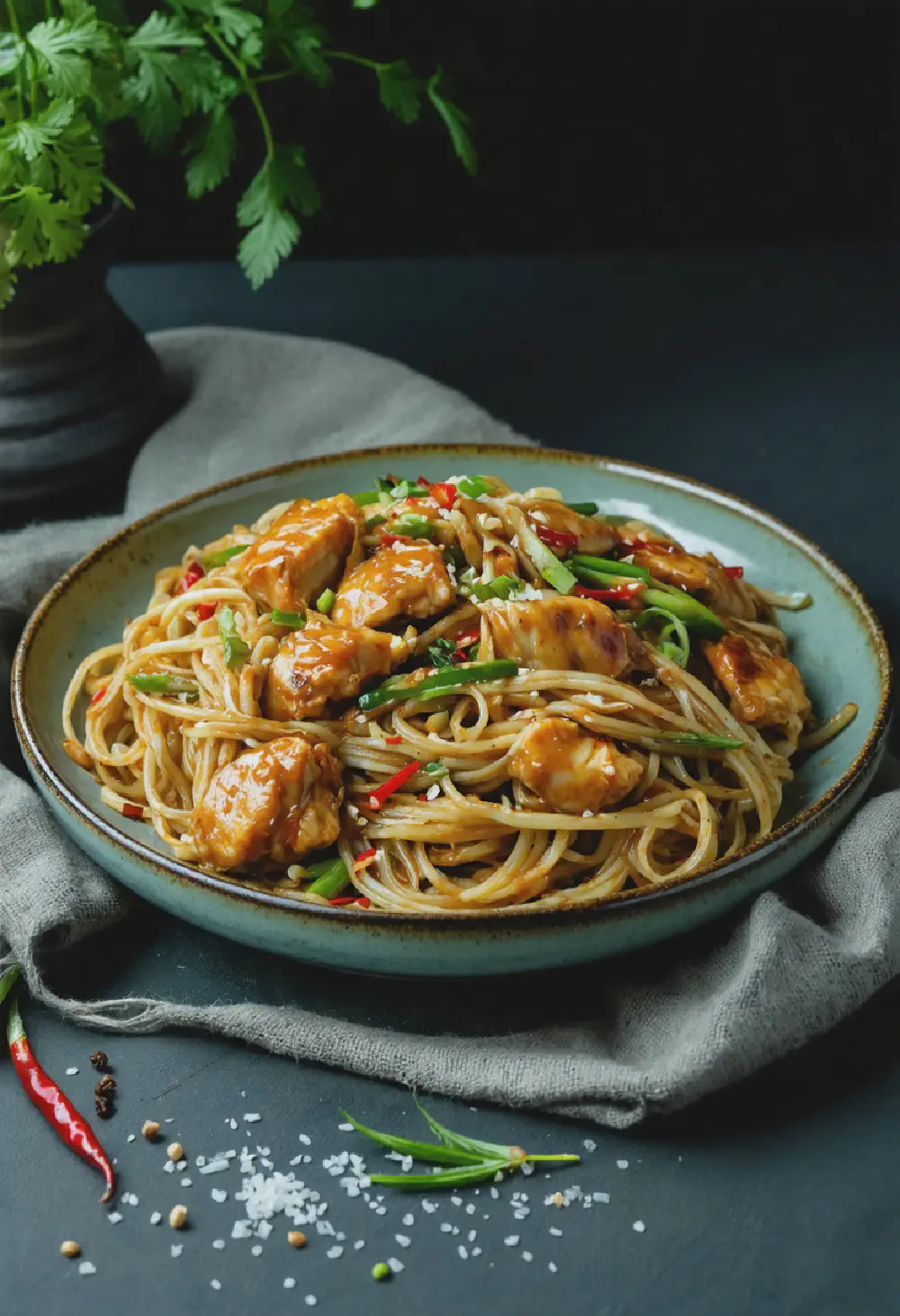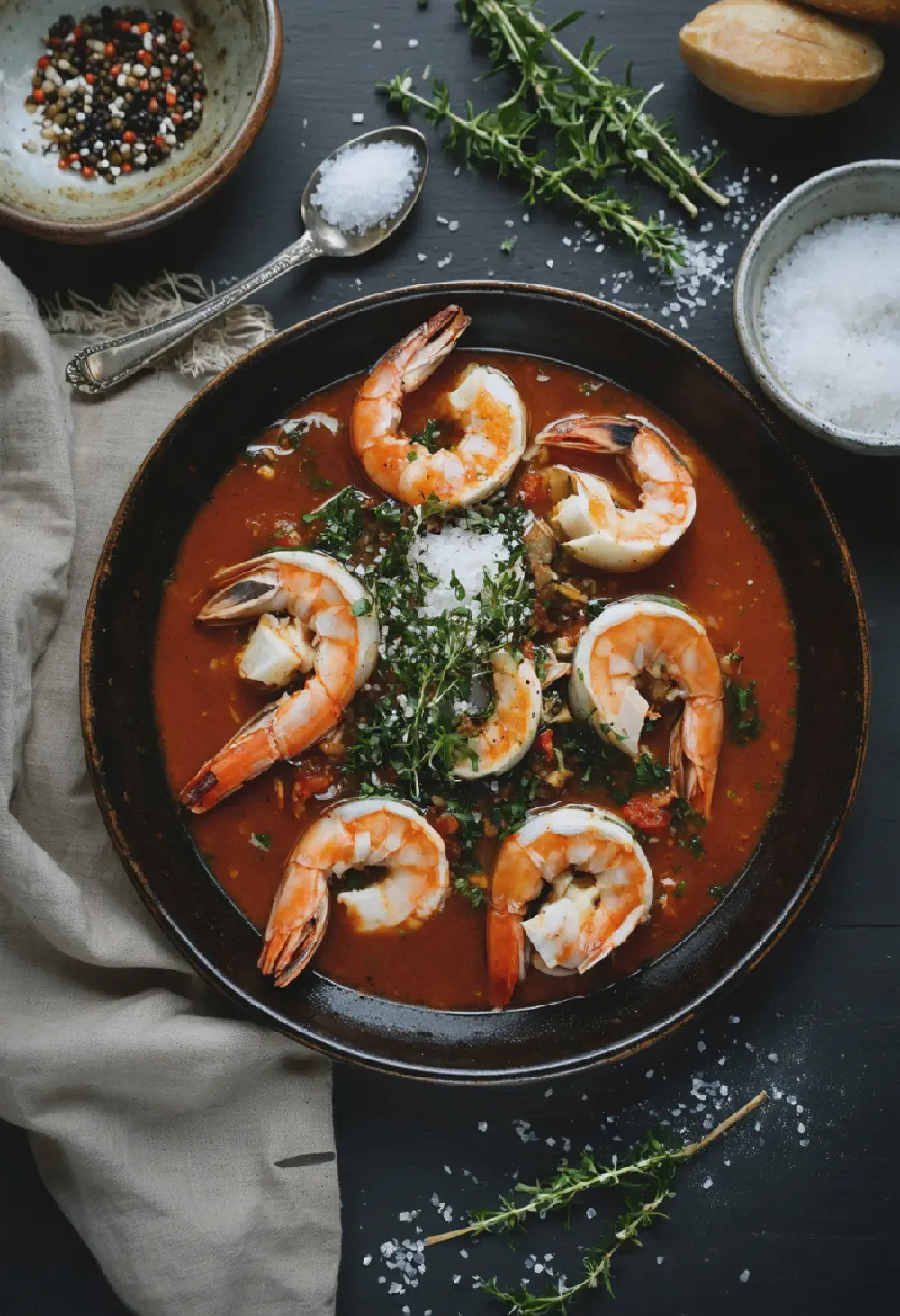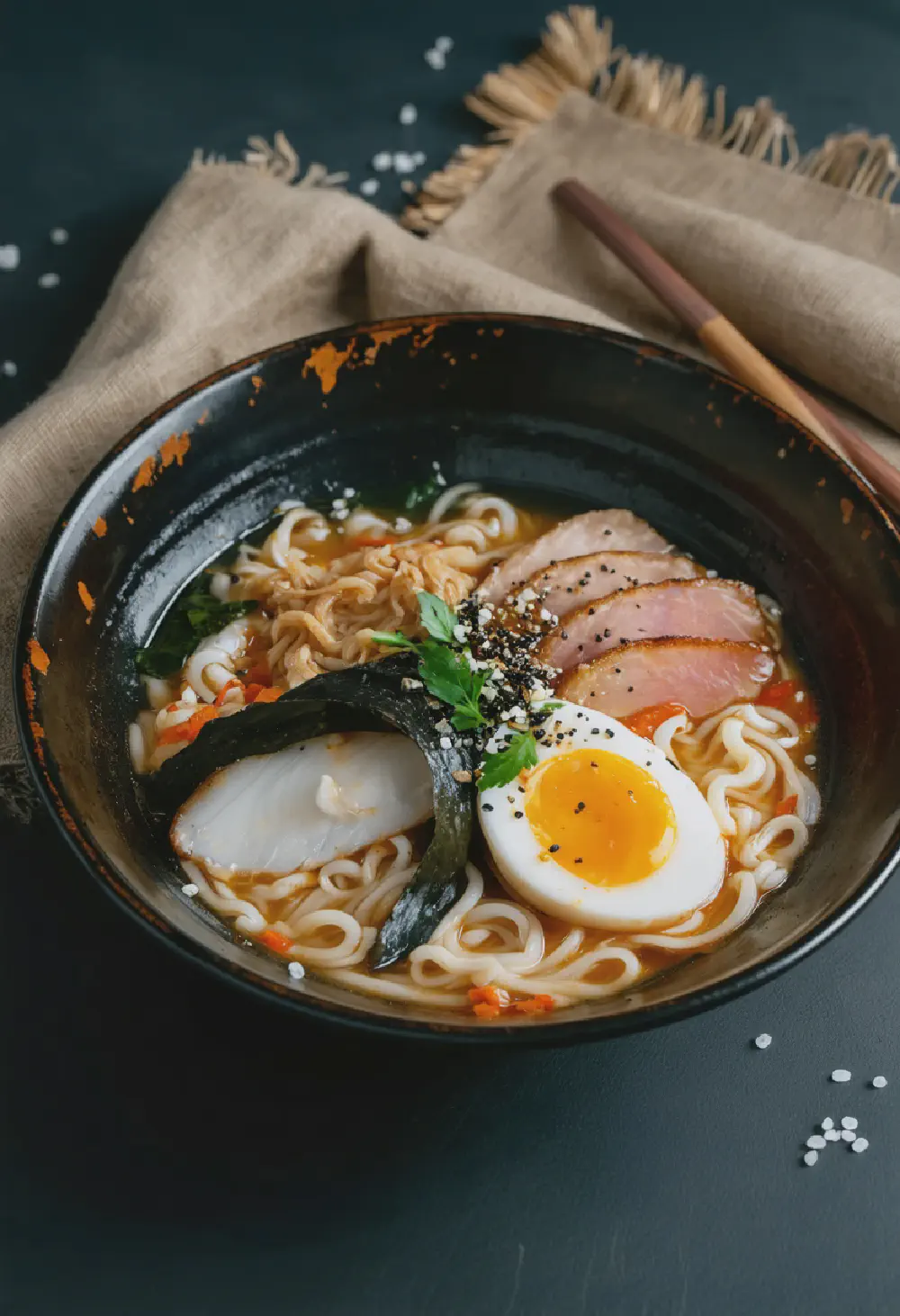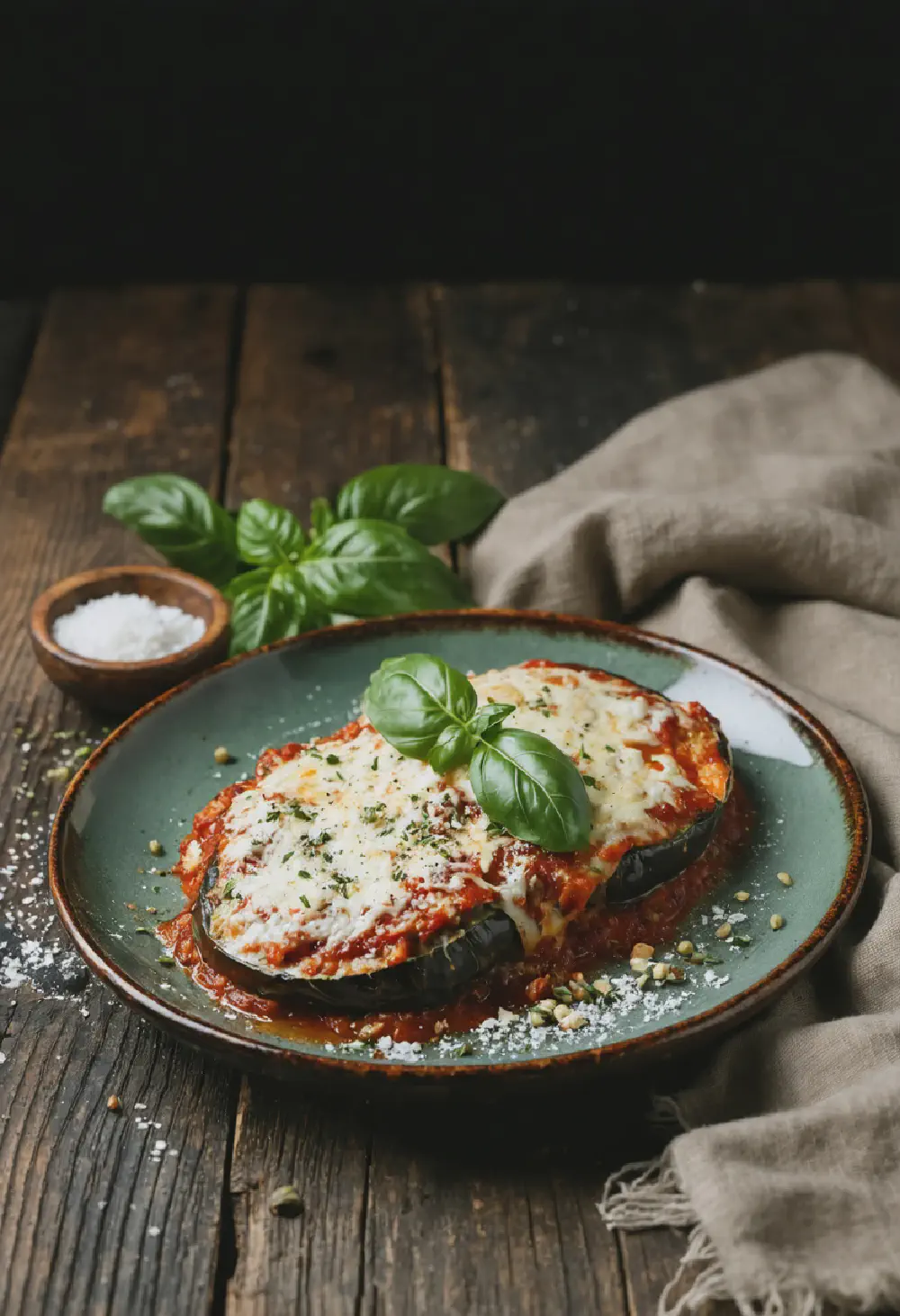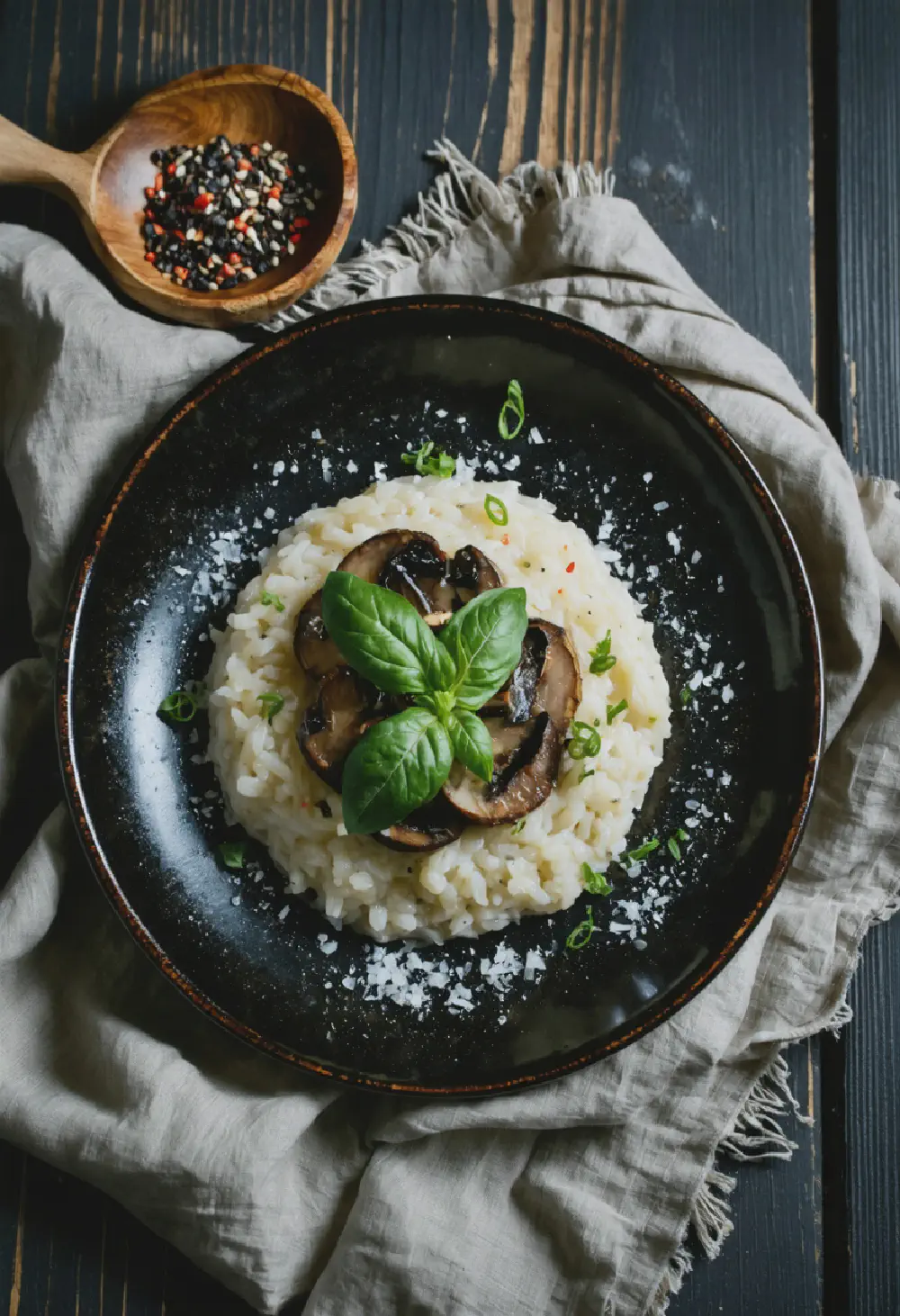Australian Lamb Shanks with Bush Tomato
20M
2H and 50M
- Makes 4
- 4 lamb shanks
- 2 tablespoons olive oil
- 1 large onion, finely chopped
- 2 cloves garlic, minced
- 1 cup red wine
- 2 cups beef stock
- 1/2 cup bush tomatoes, dried and crushed
- 2 sprigs fresh rosemary
- 2 sprigs fresh thyme
- Salt and pepper to taste
- Preheat your oven to 325°F (160°C).
- Season the lamb shanks generously with salt and pepper.
- Heat the olive oil in a large, oven-proof pot over medium-high heat. Brown the lamb shanks on all sides, about 3-4 minutes per side. Remove the shanks and set aside.
- In the same pot, add the chopped onion and cook until softened, about 5 minutes. Add the garlic and cook for another minute.
- Pour in the red wine, scraping the bottom of the pot to deglaze. Let it simmer for 2 minutes.
- Add the beef stock, crushed bush tomatoes, rosemary, and thyme. Stir to combine.
- Return the lamb shanks to the pot, ensuring they are mostly submerged in the liquid. Bring to a simmer.
- Cover the pot with a lid and transfer it to the preheated oven. Cook for about 2.5 hours, or until the meat is tender and falling off the bone.
- Remove the pot from the oven. Carefully take out the lamb shanks and set them aside. Skim off any excess fat from the surface of the sauce.
- If the sauce is too thin, place the pot over medium heat and simmer until it thickens to your desired consistency.
- Return the lamb shanks to the pot, coat them with the sauce, and serve hot.
Australian Lamb Shanks with Bush Tomato: A Deep Dive into Its History, Taste, and Cultural Significance
History
The Australian Lamb Shanks with Bush Tomato recipe is a testament to the rich culinary heritage of Australia, particularly highlighting the influence of Indigenous Australian cuisine. The dish’s origins can be traced back to the traditional cooking methods of Australia’s First Nations people, who have utilized bush tomatoes for thousands of years. Bush tomatoes, also known as desert raisins, are native to the arid regions of Australia and have been a staple in Indigenous diets long before European settlement. The integration of lamb shanks into this dish reflects the evolution of Australian cuisine, blending Indigenous ingredients with introduced meats. This fusion showcases the adaptability and innovation within Australian culinary practices, making Australian Lamb Shanks with Bush Tomato a dish that honors both its Indigenous roots and the country’s multicultural influences.
Taste Profile
Australian Lamb Shanks with Bush Tomato offer a unique and robust flavor profile that is distinctly Australian. The tender, slow-cooked lamb shanks provide a rich, savory base that is perfectly complemented by the unique taste of bush tomatoes. These tomatoes, when dried, develop a sweet and tangy flavor with a slightly caramelized undertone, adding depth and complexity to the dish. The combination of the succulent meat and the distinctive taste of bush tomatoes creates a harmonious blend of flavors that is both comforting and exotic. The dish often includes additional herbs and spices, which can vary by region, further enhancing its taste and making it a beloved comfort food in Australian households.
Cultural Significance
Within Australian cuisine, Australian Lamb Shanks with Bush Tomato hold significant cultural value, particularly in the context of Indigenous Australian foodways. The use of bush tomatoes in this dish is a nod to the deep connection Indigenous Australians have with their land and its resources. By incorporating this native ingredient, the recipe not only celebrates the biodiversity of Australia but also acknowledges the culinary knowledge and traditions of its First Nations people. Furthermore, the dish serves as a bridge between different cultural groups within Australia, promoting a sense of unity and appreciation for Indigenous ingredients and cooking techniques. As such, Australian Lamb Shanks with Bush Tomato are more than just a meal; they are a celebration of Australia’s diverse cultural heritage and a testament to the country’s ongoing journey towards reconciliation and cultural appreciation.
